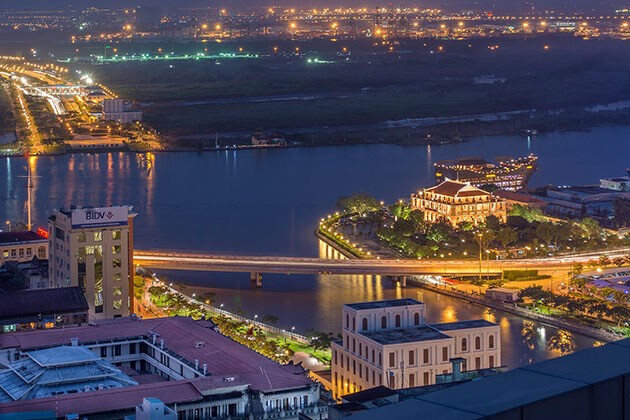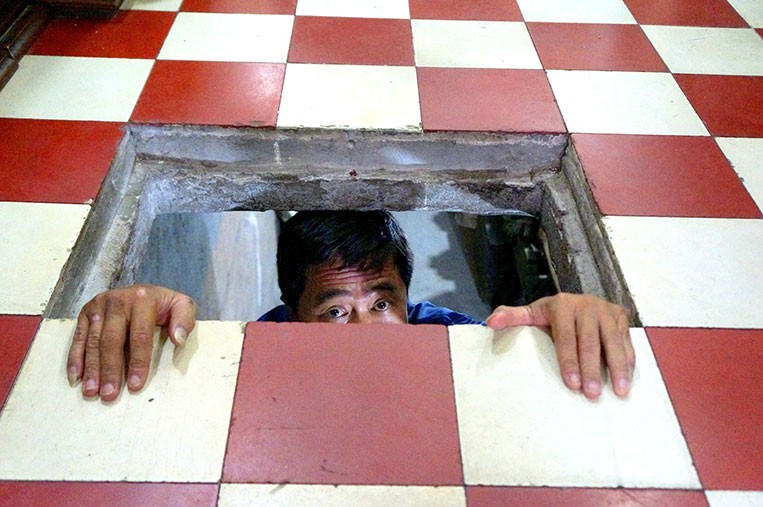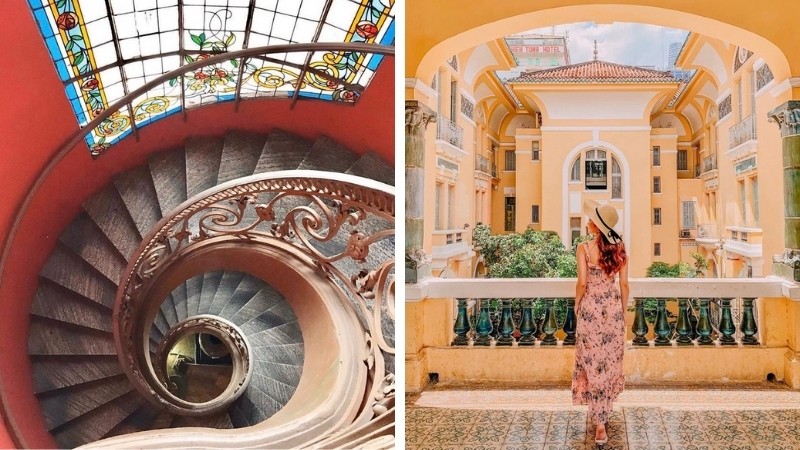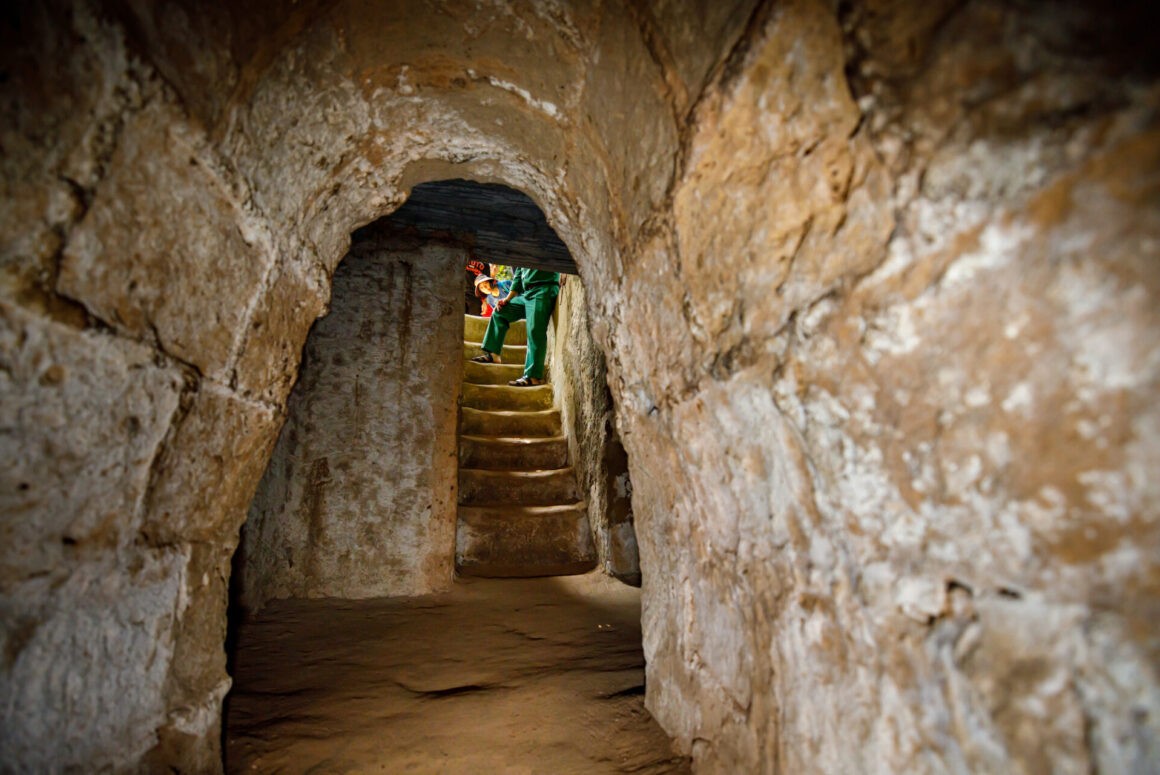Historical Destinations to Visit on Reunification Day in Ho Chi Minh City
Ho Chi Minh City is a treasure trove of Vietnam’s rich historical heritage, particularly significant sites related to the Vietnam War.
Nha Rong Harbor
Nha Rong Harbor (or Ho Chi Minh Museum – Ho Chi Minh City branch) is the largest harbor in Saigon and a renowned attraction, captivating both domestic and international visitors with its unique architecture that blends French elegance and Vietnamese cultural influences.
Nha Rong Harbor holds historical significance as the point of departure for President Ho Chi Minh, the revered leader of Vietnam, as he embarked on a journey to seek national liberation in 1911. This historic destination is a must-see for anyone exploring Ho Chi Minh City.
 |
| Nha Rong Harbor (or Ho Chi Minh Museum – Ho Chi Minh City branch) is renowned as the largest harbor in Saigon. Photo: Saigon Local Tour |
Nha Rong (or Ho Chi Minh Museum) is strategically situated at the junction of the Saigon River and the end of Nguyen Tat Thanh Street. “Nha Rong” translates to “Dragon House.” It initially served as a bustling commercial harbor during the French occupation of Vietnam, constructed between 1862 and 1863 to facilitate the exchange of goods, weapons, and supplies.
Visitors to Nha Rong Harbor are captivated by its striking architecture. Two majestic ceramic dragons adorn its rooftop, representing Vietnam’s cultural heritage. The dragon is a symbol of Vietnam’s cultural identity and can be found in numerous pagodas, temples, and homes.
Saigon Special Forces Weapons Bunker
Beneath an unassuming café in downtown Ho Chi Minh City lies a hidden bunker that once concealed nearly two tons of Vietcong weaponry. These weapons played a crucial role in the 1968 Tet Offensive, a pivotal moment in the Vietnam War that ultimately led to the victory of communist North Vietnam.
 |
| The extraordinary weapons bunker in the heart of Ho Chi Minh City. Photo: Saigon Riders |
The basement of House No. 287/70 Nguyen Dinh Chieu Street, District 3, Ho Chi Minh City, was once a secret hideout for weapons used by the Saigon Commandos. The weapons, weighing nearly 2 tons, were stockpiled in preparation for the General Offensive.
Today, the house has been transformed into a small museum, preserving a significant chapter of Vietnamese history. In 1986, the Ministry of Culture designated it as a historical and cultural relic. The adjacent Do Phu Café also features secret passages and is owned by Tran Vu Binh, son of Van Lai.
Ho Chi Minh Museum of Fine Arts
Ho Chi Minh City Museum of Fine Arts is a cultural icon of Ho Chi Minh City, occupying a prominent position in the heart of this vibrant metropolis. It is widely acknowledged as an architectural masterpiece, housing a remarkable collection of precious artifacts and works of art.
The museum is a popular destination for both domestic and international visitors who are drawn to its exquisite architecture and the exceptional collection it houses.
 |
| The Ho Chi Minh City Museum of Fine Arts is an iconic cultural landmark in the heart of Ho Chi Minh City. Photo: BestPrice Travel |
The Ho Chi Minh City Museum of Fine Arts showcases Art Deco architectural style, harmoniously blending the distinctive elements of Asian and European architecture. Spread across an area of 3,514 square meters, the museum comprises three buildings, each serving a different purpose.
The Ho Chi Minh City Museum of Fine Arts is an unmissable destination for visitors interested in Vietnamese art and culture. The museum is dedicated to collecting, preserving, and displaying exceptional artworks that represent the Vietnamese people, with a focus on Ho Chi Minh City and the Southern region.
Cu Chi Tunnels
The Cu Chi Tunnels are located approximately 70 kilometers northwest of Ho Chi Minh City. The tunnel complex extends over 200 kilometers and served as a strategic base for the Party Committee and Command of the Saigon-Gia Dinh Military Region.
The site is divided into two main areas: Ben Duoc in Phu My Hung Commune and Ben Dinh in Ruan Duc Commune, both of which attract numerous tourists visiting Ho Chi Minh City. Some of the tunnels have been restored and widened to accommodate visitors.
 |
| The Cu Chi Tunnels are located about 70 kilometers northwest of Ho Chi Minh City. Photo: Shutterstock |
During the Vietnam War, the tunnels were transformed into a vast complex that served as a hub for communist guerrilla soldiers. They provided shelter for troops, facilitated communication and supply transportation, accommodated medical facilities, offered protection from aerial attacks, and enabled surprise attacks, allowing the soldiers to vanish underground once their mission was accomplished.
As a military headquarters, the Cu Chi Tunnels were instrumental in the Vietnamese forces’ resistance against the American army in South Vietnam. They served as a strategic stronghold for planning and launching successful military campaigns, including the iconic Tet Offensive in 1968.
The post Historical Destinations to Visit on Reunification Day in Ho Chi Minh City appeared first on Vietexplorer.com.
Nhận xét
Đăng nhận xét